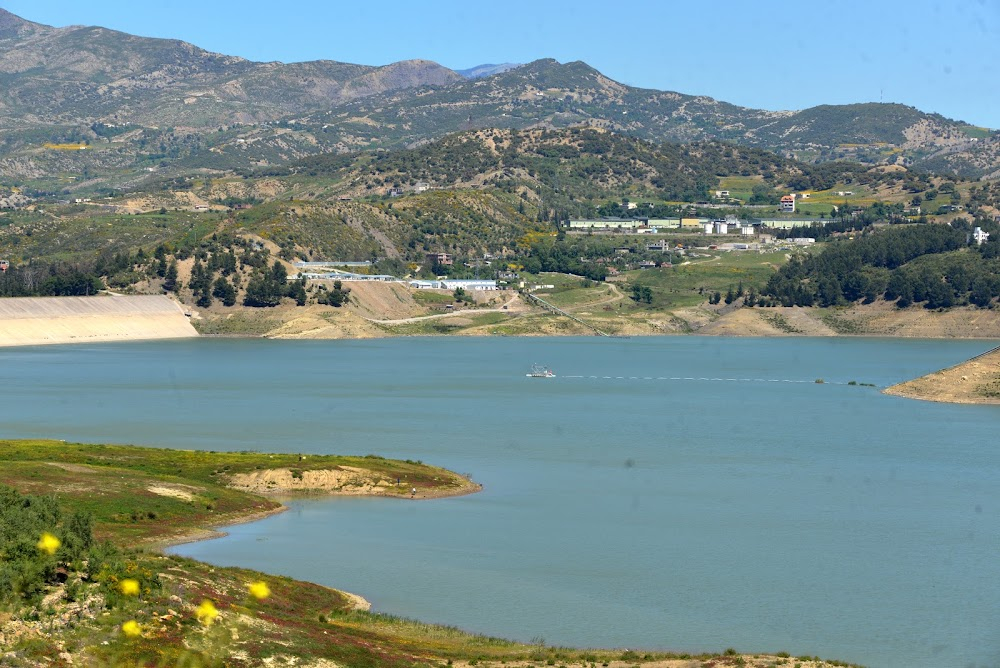L'Algérie au travail Filming Locations

Where was L'Algérie au travail filmed? L'Algérie au travail was filmed in 5 locations across Algeria in the following places:
L'Algérie au travail Filming Locations
Algiers is the capital city of Algeria, on the country’s Mediterranean coast. It’s known for the whitewashed buildings of the Kasbah, a medina with steep winding streets, Ottoman palaces and a ruined citadel. The 17th-century Ketchaoua Mosque is flanked by 2 large minarets. The Great Mosque has marble columns and arches. The clifftop Catholic basilica of Notre-Dame d'Afrique features a large silver dome and mosaics.
Oran is a port city in northwest Algeria, known as the birthplace of rai folk music. Fort Santa Cruz, an Ottoman citadel rebuilt by the Spanish, sits atop Mount Murdjadjo and has views of the bay below. Nearby is the whitewashed Chapelle Santa Cruz, built after a cholera epidemic. In La Blanca, the Turkish old town, is the 18th-century Pacha Mosque with an octagonal minaret. Nearby, Kasr El Bey is an Ottoman palace.
Kénadsa is a town and commune in the Sahara Desert of south-western Algeria, and is the capital of Kénadsa District, Béchar Province. As of 2008, Kénadsa had a population of 13,492, up from 11,667 in 1998, and an annual growth rate of 1.5%. The commune covers an area of 2,770 square kilometres.
L'Algérie au travail (1946)
The Cinematographic Broadcasting Service (SDC) of the General Government of Algeria (GGA, then Government Delegation in Algeria), created in 1943 but active only from 1945, is used to broadcast films produced by France on Algerian colonialism in the countryside (and more rarely in the cities) of Algeria using "cinebuses" whose number will increase until the end of the Algerian war. Organized in the manner of German propaganda and its American counterparts of the Psychological Warfare Branch during the Second World War, composed largely of civil servants of "European" origin, the SDC is resolutely thought of as a tool for psychological action, used in times of peace as in times of war with rural populations in order to orient their perception of colonial power. The filmic grandeur of the French action contrasted sharply with the reality of a dispossessed and exploited population. The children, for their part, represented even more of a captive audience, the supposed aim of the school screenings being to inculcate in them the "bases" of history and geography concerning Algeria, giving little account of the disparities at work in the Algerian society. To improve acceptance of propaganda, which involves documentaries, the two services (SCD and CHPT/CDP) almost systematically offer short fiction films, mainly cartoons and comedy films of the Charlot type, as well as short musical films in Arabic (Music and joy; The unexpected party...). The listing of SDC cinebuses is made up of a variety of films that make the service an "instrument of information, mass education, relaxation of minds and sometimes also French propaganda"13. Sometimes and above all, because the bulk of the films are generalist propaganda documentaries on Algeria (highlighting the role of France in the human and industrial development of the country: Algeria at work; Algiers the city that builds; El Djezaïr. ..), to which is added the prophylactic and technical film (Once upon a mountain; Alert to the fields; Alert to mothers; Boussaad, Djeloul and the mosquitoes; Caravan of light...) and the tourist film on the different regions from Algeria, even from France. As we can see, these films alternate between prosaic considerations on malaria or the gullying of the mountains and generalist propaganda whose content is most often very far removed from the daily life of the Algerian populations to whom they are addressed.




